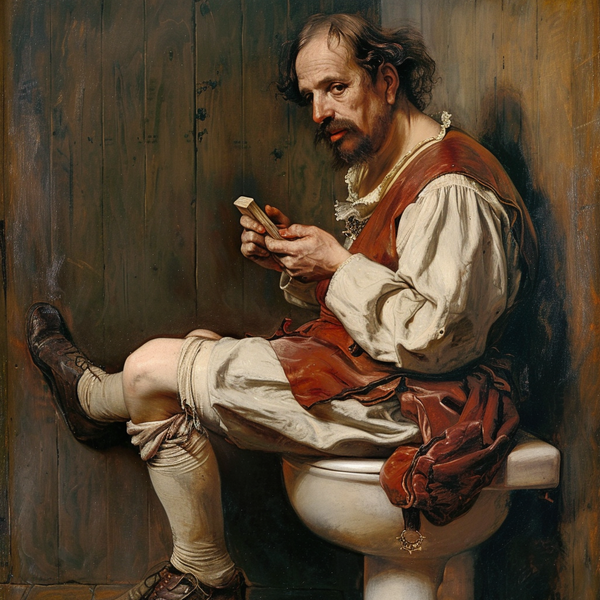The Ideal Quantum Economic Marketplace
When you understand the dynamics of a marketplace, you can create a sustainable marketplace that avoids the pitfalls of current architectures.

Ah, the dreaded two-sided marketplace.
If you ask most people in business, they'll tell you it's one of the hardest business models to pull off.
There's even a name for the biggest issue with marketplaces: The Cold Start Problem.
But that problem assumes something that doesn't have to be true:
The main offering a marketplace offers to the users of the marketplace is a recommendation algorithm.
This creates a broken incentive model due to pricing dynamics that happen in marketplaces. Let's take a look at why.
Marketplace Dynamics
In order to understand the dynamics, we have to understand the players in the system.
There's the company. They offer the network and the recommendation algorithm.
There are multiple buyers looking for products.
There are multiple sellers offering products.
So, there's 1 company, N buyers, and M sellers.
But in a marketplace, the primary thing that buyers will end up comparing on is price, because they don't understand the recommendation algorithm or how it is defined. Therefore, there is market pressure that lets the lower priced sellers win. If you offer a superior product, you can still lose out based on price. Even within a local subset of product offerings that might be close on price, the lowest price wins, because eventually, the available details about the offering will appear similar. At that point, the only difference the user will see is the price.
Law of Marketplaces 1: No matter what the marketplace offers, prices go down over time
So what happens with the sellers of the top products? They are incentivized to take one of the following actions:
- Sell at a loss to build a relationship, and take future transactions outside of the marketplace.
- Leave the marketplace completely and just rely on other marketing channels that can be boosted by the word of mouth provided by current buyers.
Either way, it doesn't make sense for the top performers to stay in the marketplace. Same for the biggest buyers, because there's no reason to keep looking if you find someone who can provide what you want.
Law of Marketplaces 2: The top users of a marketplace are incentivized to leave the marketplace.
Therefore, any recommender system you build will simply become the target to shoot for, because the recommender system will elevate some products over others, people will see that, and the offerings will collapse to the algorithm. At that point, it ceases to become useful to the buyer or the seller, and the only people left on the marketplace are the ones who have fully molded their offerings to the algorithm of the marketplace.
Law of Marketplaces 3: If there is a single recommendation algorithm driving the behavior of the marketplace, behavior in the marketplace will collapse to the algorithm.
Ok, so that tells us quite a bit about how the marketplace will end up functioning. So how the hell can we build a marketplace that actually works?
Marketplace Participant Dynamics
If you want a marketplace that can survive, you need to start with a couple of laws that can define the participants in the marketplace.
Law of Marketplace Participants 1: They are all individuals
The first thing to understand is that each participant in the marketplace, whether on the buyer or seller side, is unique. That means a given participant cannot be fully replaced by any other participant.
Law of Marketplace Participants 2: They watch the marketplace
Both sides in the marketplace observe the marketplace to help understand how prices are being set. So for any transaction they make in the marketplace, they observe N other transactions to help them figure out the right pricing.
Law of Marketplace Participants 3: They maximize their leverage in the marketplace over time.
Given laws 1 and 2, the participants utilize their unique properties to give them the maximum value in the marketplace. Over time, they adjust their behavior to optimize for their own benefit.
Building a Marketplace that Works
Once you understand the marketplace AND the participants, you can build a marketplace that can optimize for all the correct variables.
If the nodes in a network are unique, the edges between them are also unique. In the case of a marketplace, think of the edges as communication between participants in the marketplace.
That means you need to ensure three things in order to have a working marketplace:
- Everyone needs to have access to the same information. Because everyone is observing the marketplace, by ensuring that everyone has access to the same info, you can ensure that all parties involved in a transaction come into it at a given knowledge level. This enables fair negotiation of prices.
- Everyone can act in their own best interests. The main goal of a marketplace is to offer choice. Therefore, you must let them have choice. Everything in a marketplace should be optional/replaceable. By giving choice, you can ensure that all decisions made indicate something important.
- The goal of the marketplace should be choice, not ownership. When the marketplace is involved in the market, the balance of power skews in favor of the marketplace because of the data imbalance. People using a marketplace are looking at very targeted data related to their desires, not the overall data. When the marketplace uses all the data, it ends up "optimizing" better, but in a way that is destructive to the marketplace dynamics, because it doesn't act in accordance with points 1 and 2.
When these rules are followed, the marketplace become a sustainable economic network that grows over time, and can be easily evaluated by the rate of growth at any single edge (strength of relationship between 2 participants in the marketplace) compared to the rate of growth of nearby edges (the other edges connected to the involved marketplace participants).

